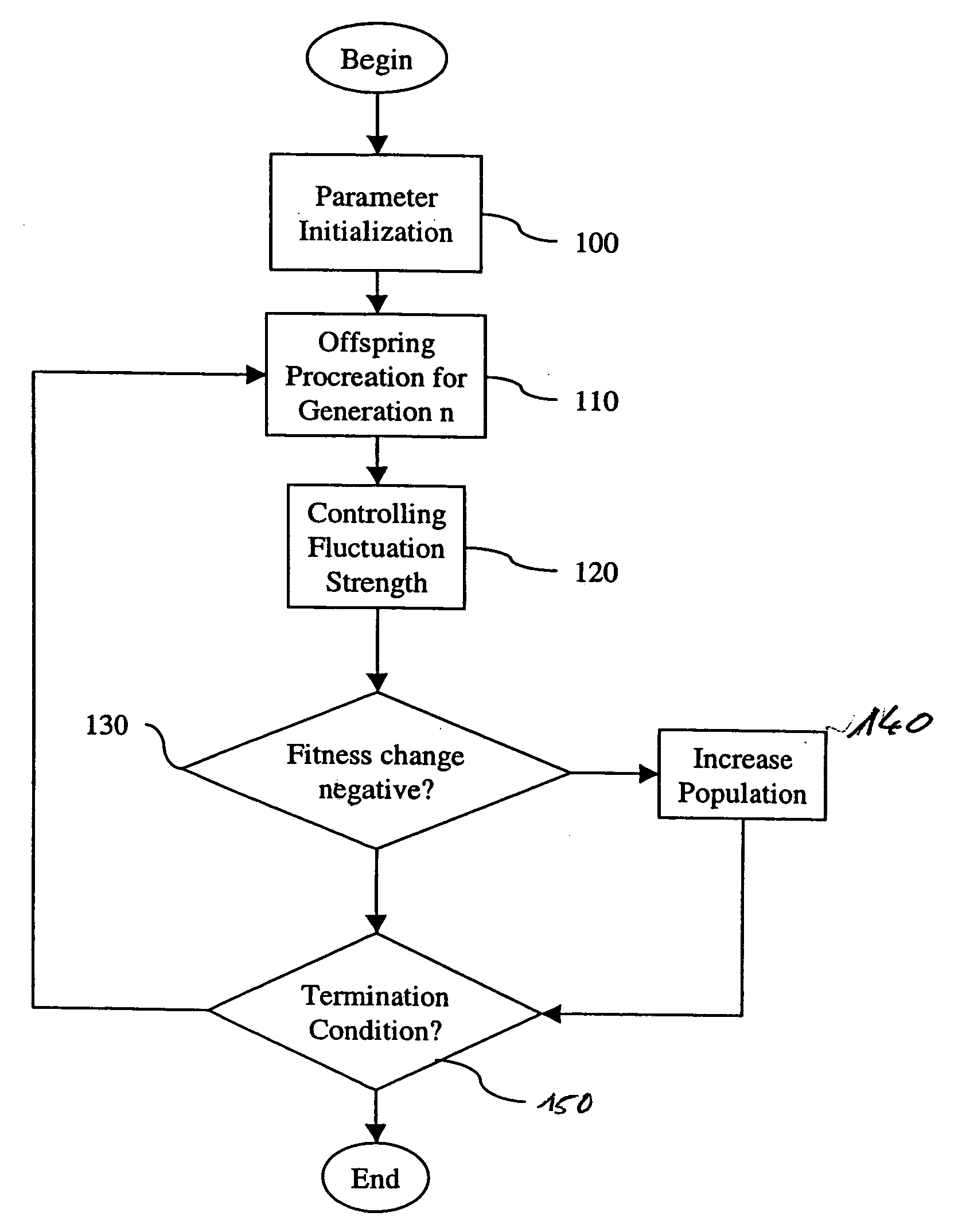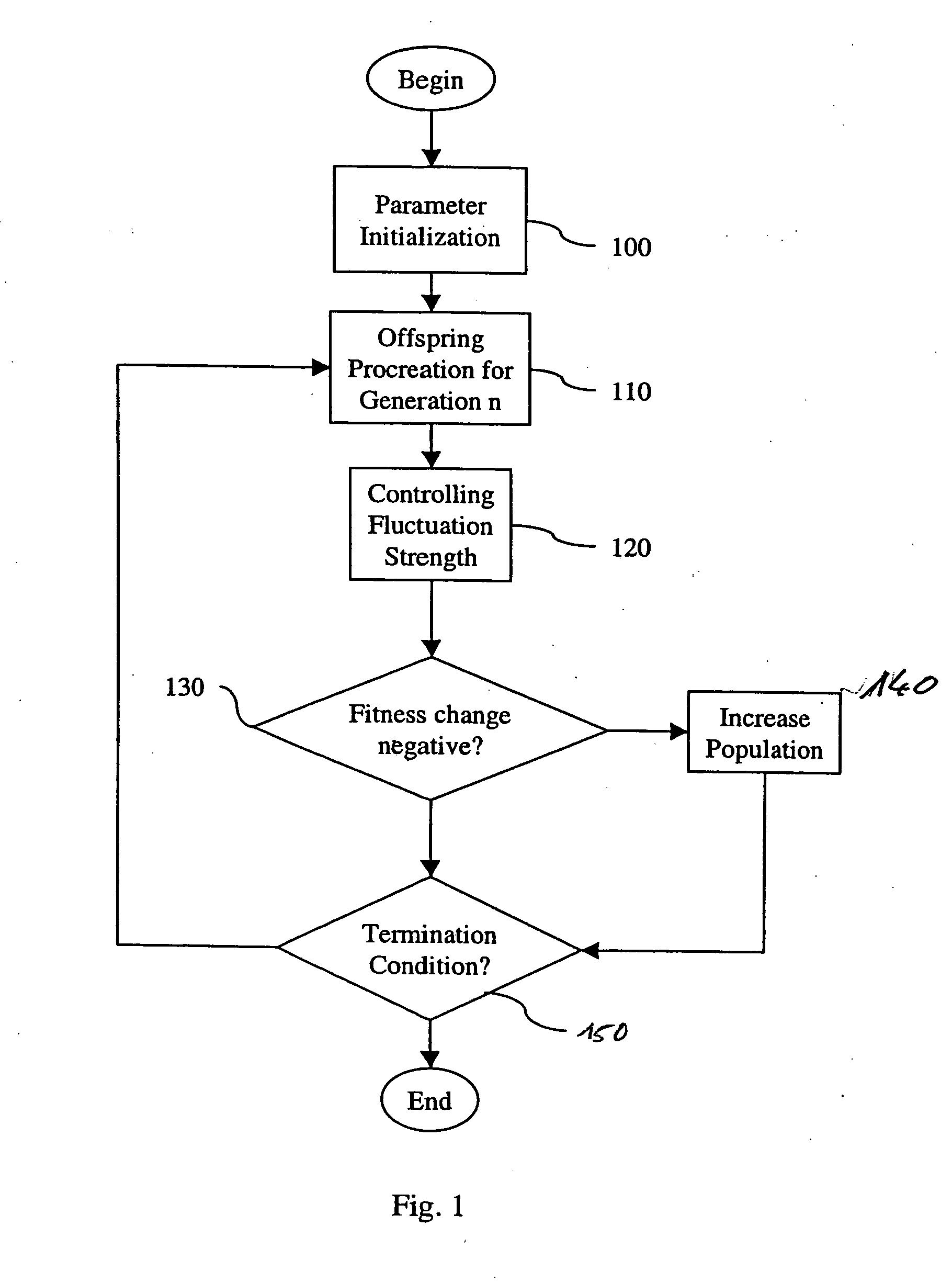Evolutionary search for robust solutions
a robust solution and evolution search technology, applied in the field of evolutionary search for robust solutions, can solve the problems of noise in the quality evaluation of optimization processes, noise deterioration of evolutionary algorithms, and inability to analyze in real-world applications, so as to reduce the residual distance, reduce the number of required fitness evaluations, and reduce the effect of residual distan
- Summary
- Abstract
- Description
- Claims
- Application Information
AI Technical Summary
Benefits of technology
Problems solved by technology
Method used
Image
Examples
first embodiment
[0036]FIG. 1 shows the invention, which takes advantage of the idea of direct robustness testing via mutations.
a. Parameter Iinitialization
[0037] In step 100, the basic parameters of the optimization algorithm are initialized.
[0038] The generation g is set to a start value (0). The mutation strength σ, the population size λ and the number of offspring generated in a single generation λ are all set to initial values, whereby the number of offspring depends on the truncation ratio . The recombinant (x) is set to an initial vector x(init).
b. Procreation of Offspring for Generation n
[0039] In step 110, the procreation of the λ offspring is realized.
[0040] First, a log-normal mutation of the recombined strategy parameter cr is performed:
σl:=(σ)exp[τσNl(0,1)] (1)
where τσ is an exogenous strategy parameter, the so-called learning parameter. In order to ensure linear convergence order of the evolutionary algorithm on the sphere, it is known to be sufficient to ensure that τσ∝1 / √{sq...
second embodiment
[0077] the invention shown in FIG. 2 is an adaptation of a different evolutionary strategy, known in the literature as cumulative step size adaptation (CSA).
[0078] Unlike the mutation strength adaptation by the previous embodiment described with reference to FIG. 1 that uses one-generation fitness ranking information only, the cumulative step size adaptation strategy relies on quality (fitness) related search space information gathered over a sequence of consecutive generations. In these strategies, the length of so-called evolution paths is used to control the variance σ2 of the object parameter mutation operator. For a comprehensive introduction to CSA see Hansen, N. and Ostermeier, A, “Completely Derandomized Self-Adaptation in Evolution Strategies”, in: Evolutionary Computation, 9(2), p. 159 to 195.
[0079] Due to the special way how the mutation strength is determined in the CSA evolution strategy and how the offspring are generated using the same mutation strength σ for all off...
PUM
 Login to View More
Login to View More Abstract
Description
Claims
Application Information
 Login to View More
Login to View More - R&D
- Intellectual Property
- Life Sciences
- Materials
- Tech Scout
- Unparalleled Data Quality
- Higher Quality Content
- 60% Fewer Hallucinations
Browse by: Latest US Patents, China's latest patents, Technical Efficacy Thesaurus, Application Domain, Technology Topic, Popular Technical Reports.
© 2025 PatSnap. All rights reserved.Legal|Privacy policy|Modern Slavery Act Transparency Statement|Sitemap|About US| Contact US: help@patsnap.com



